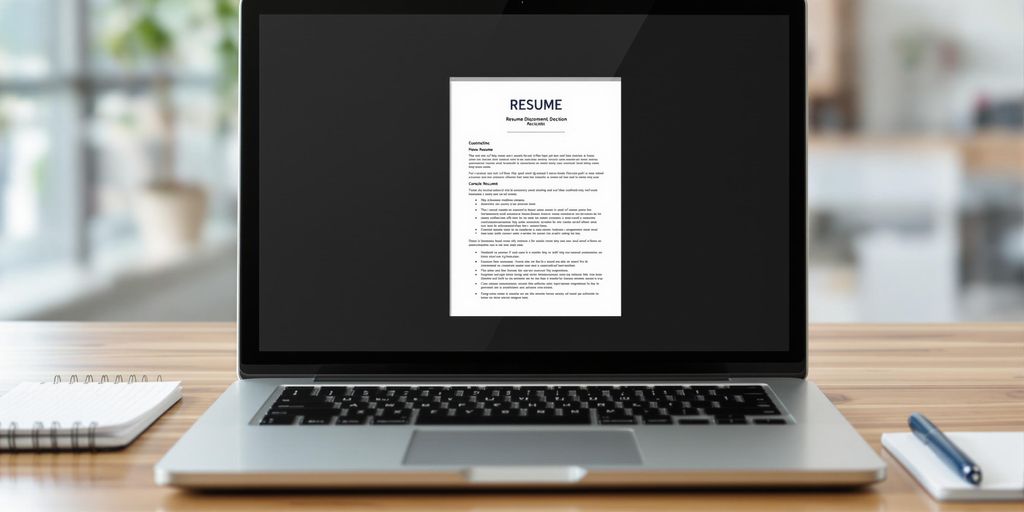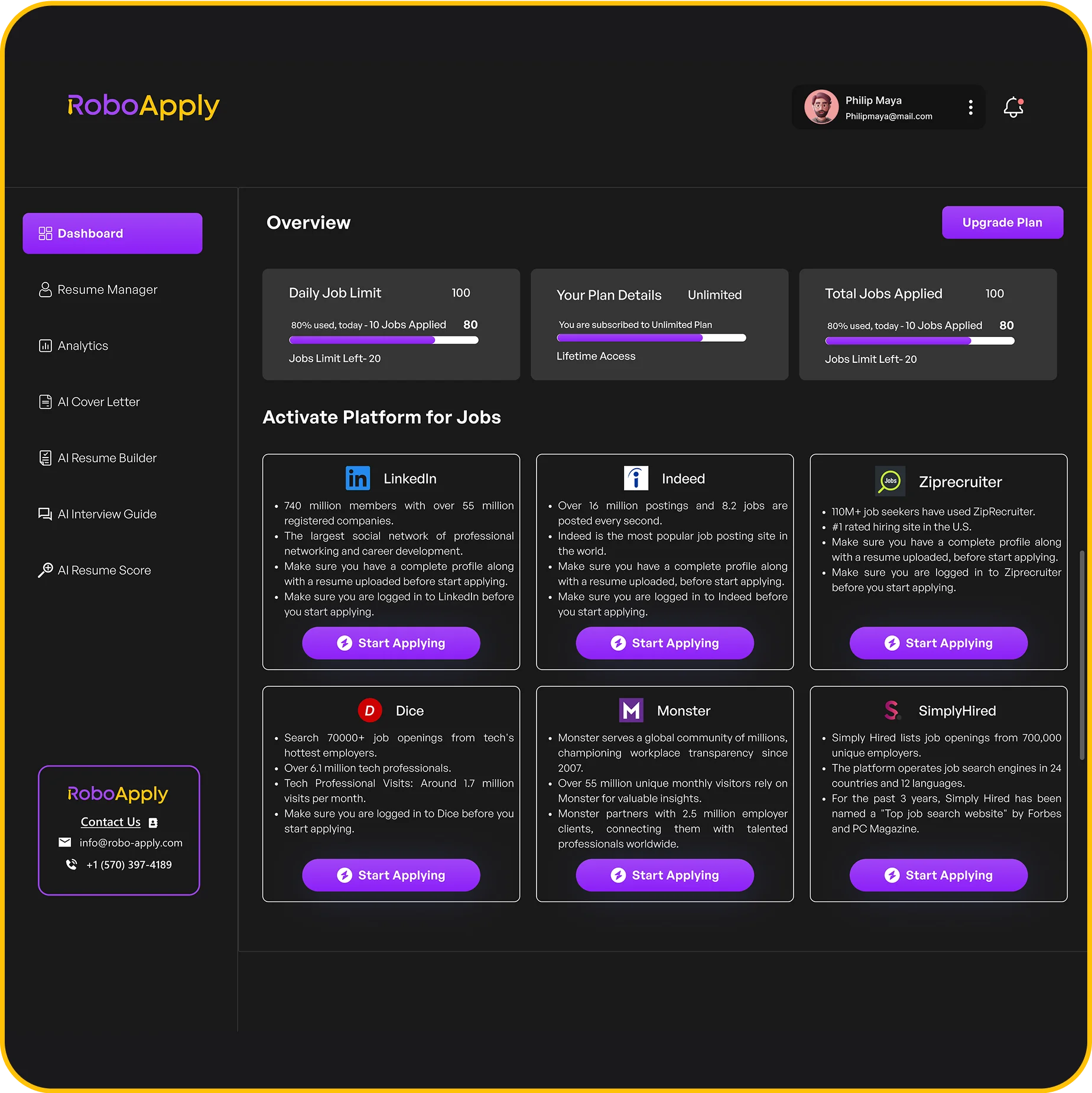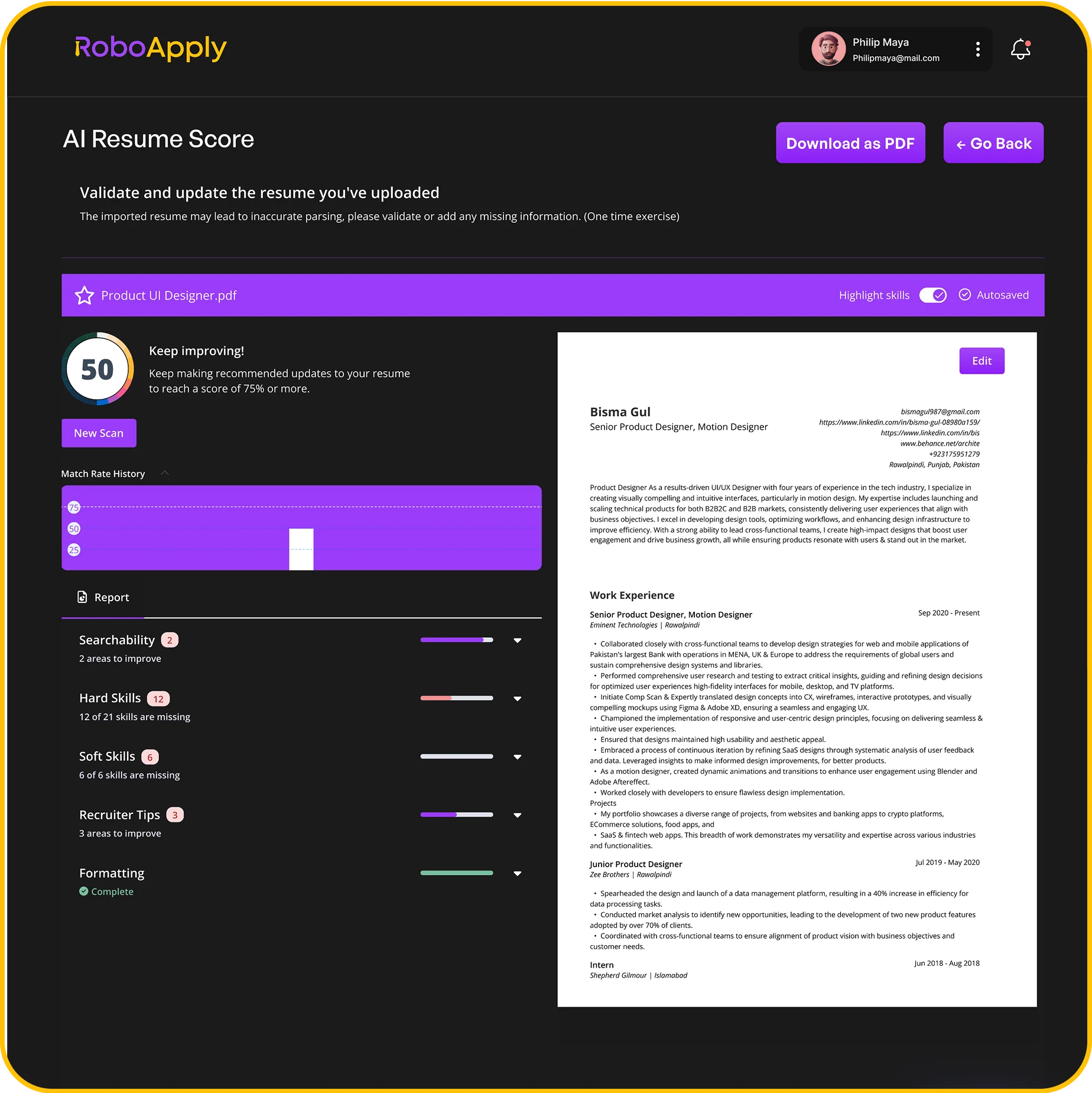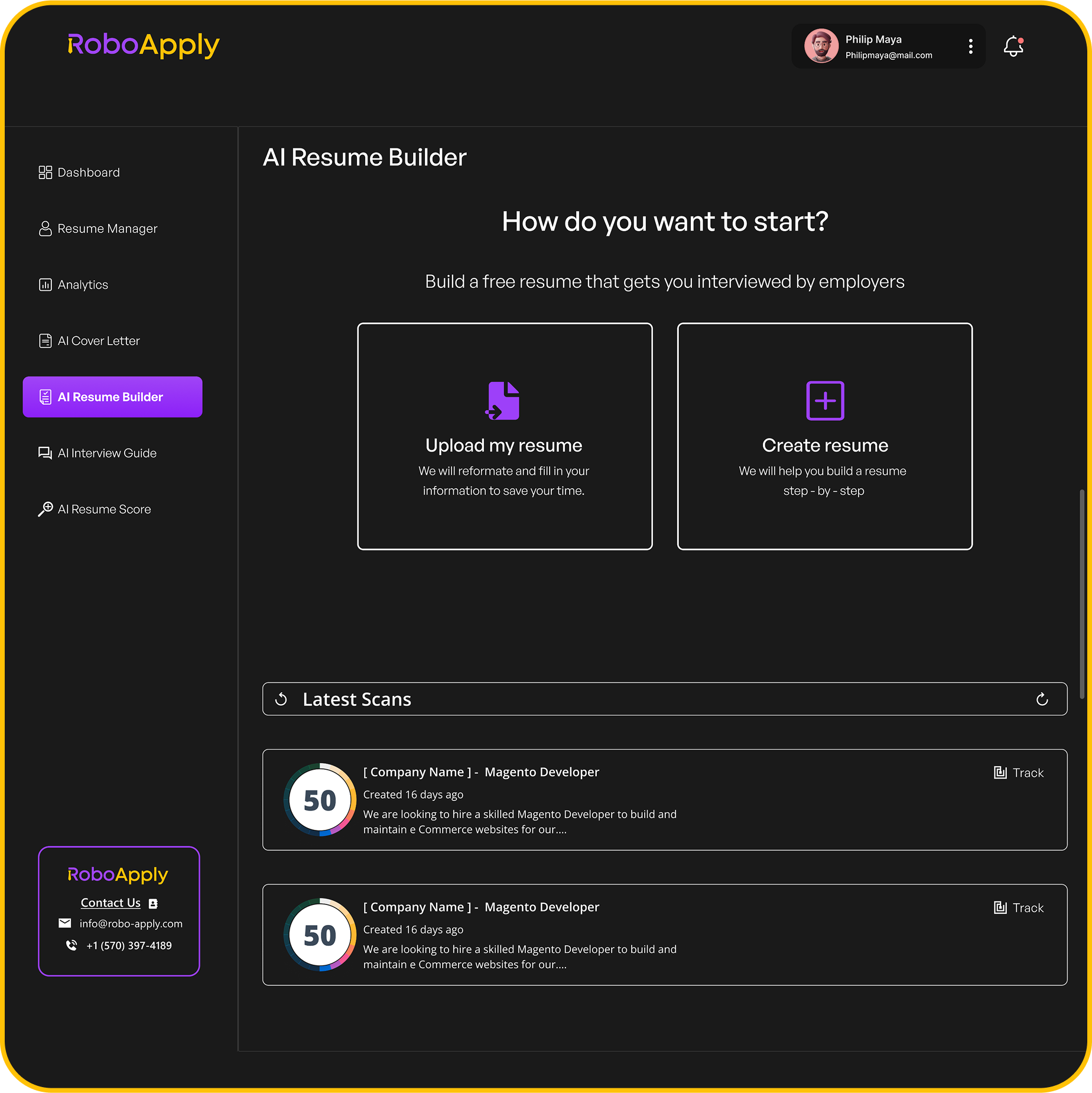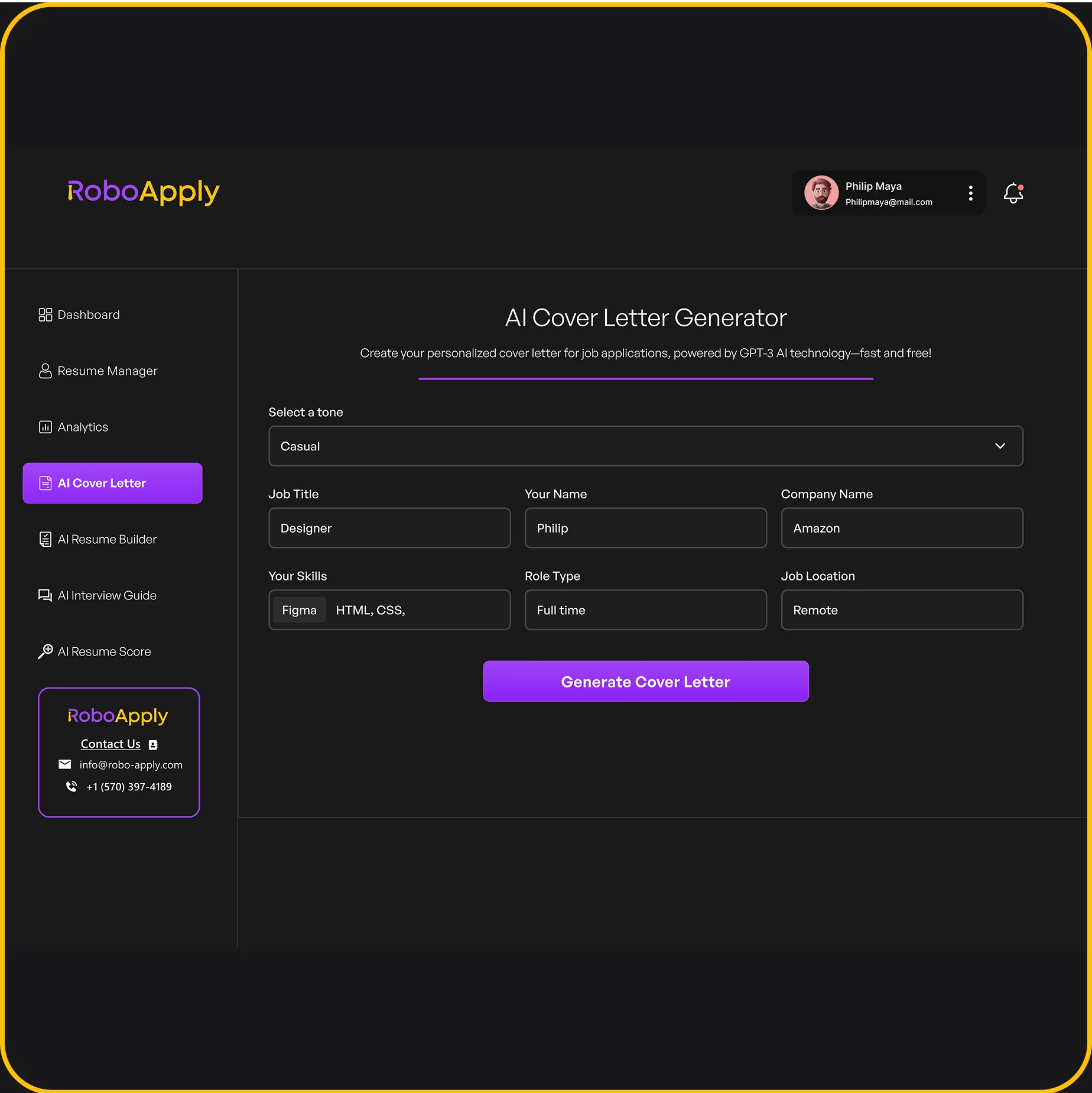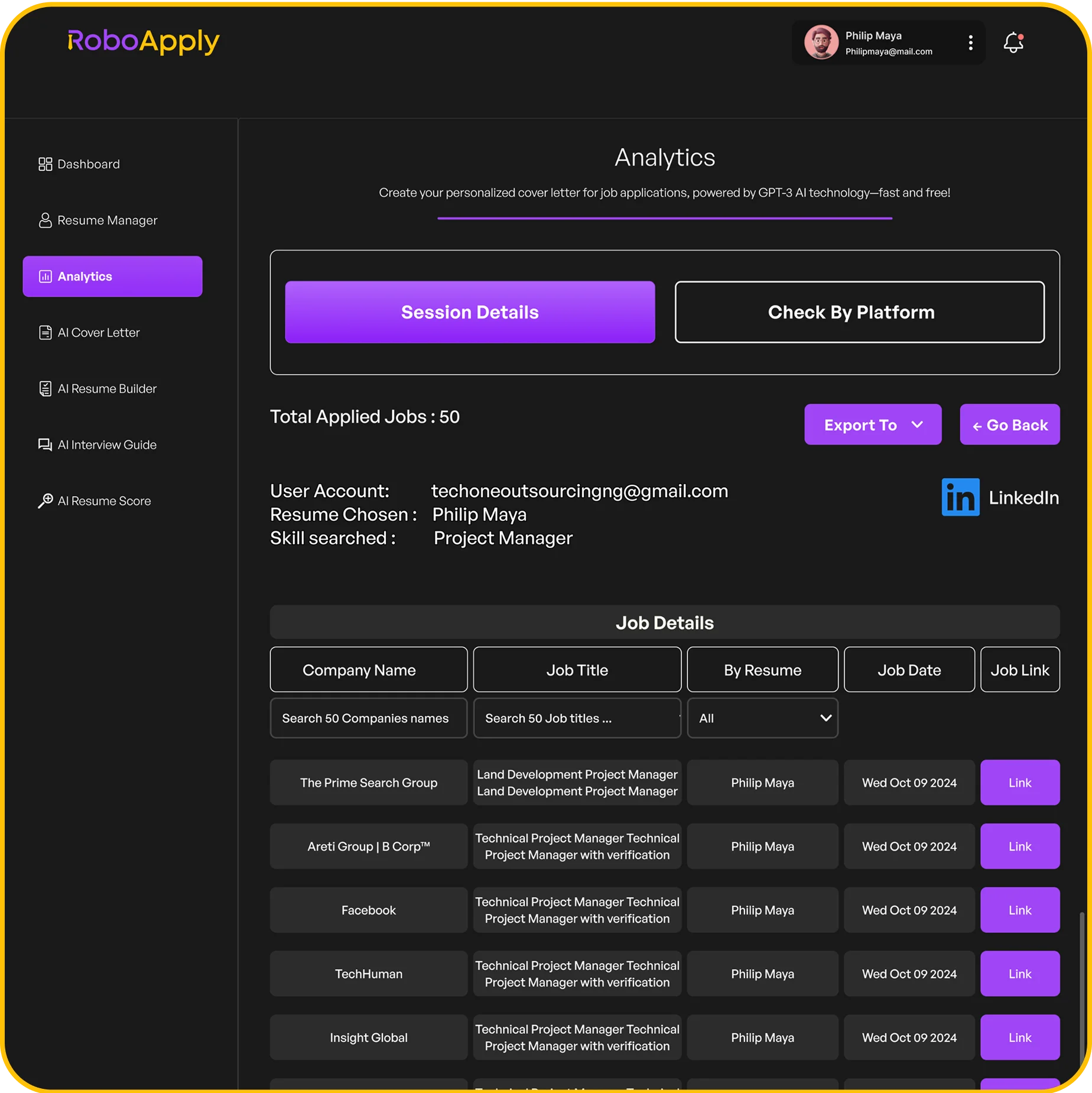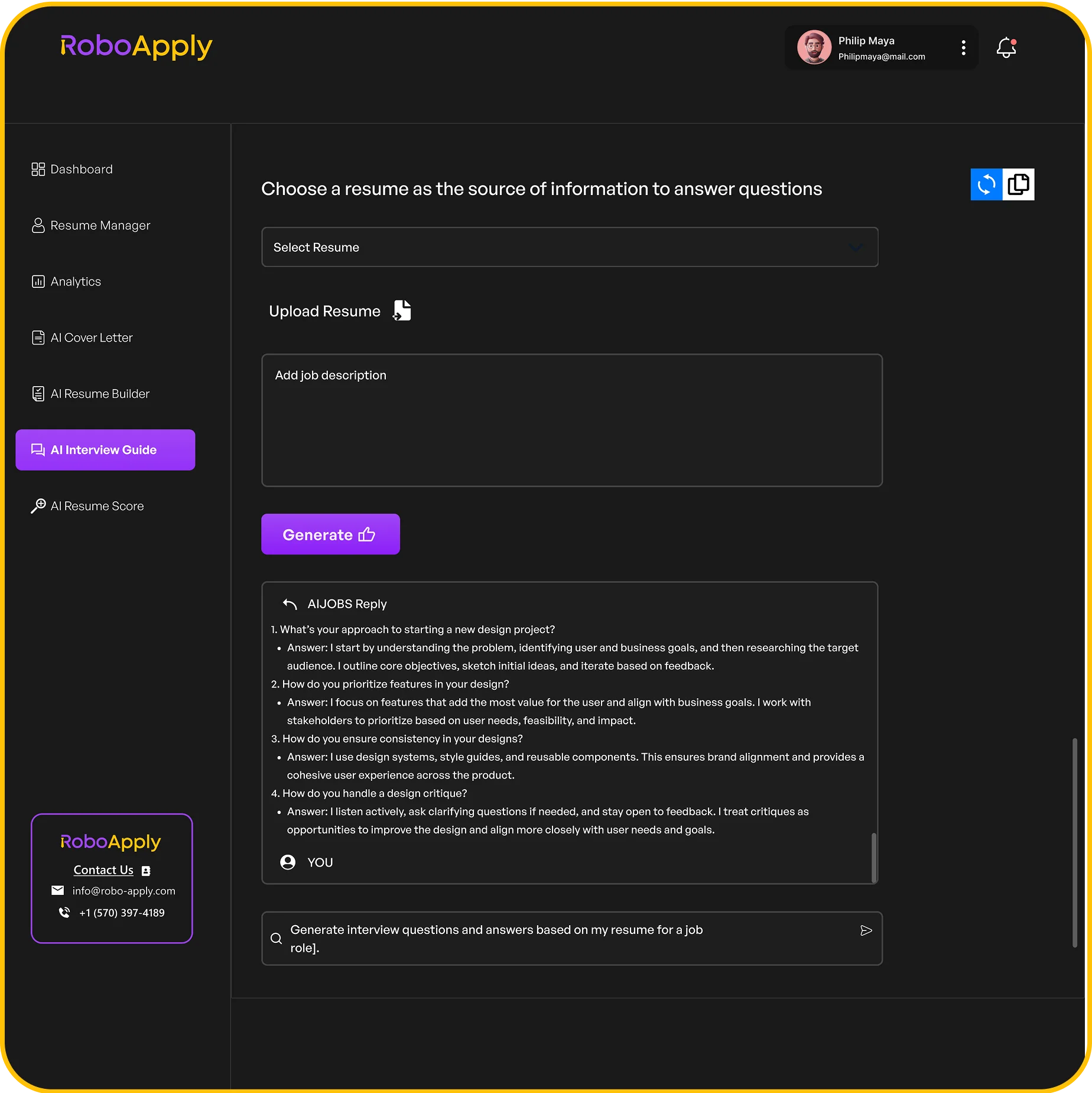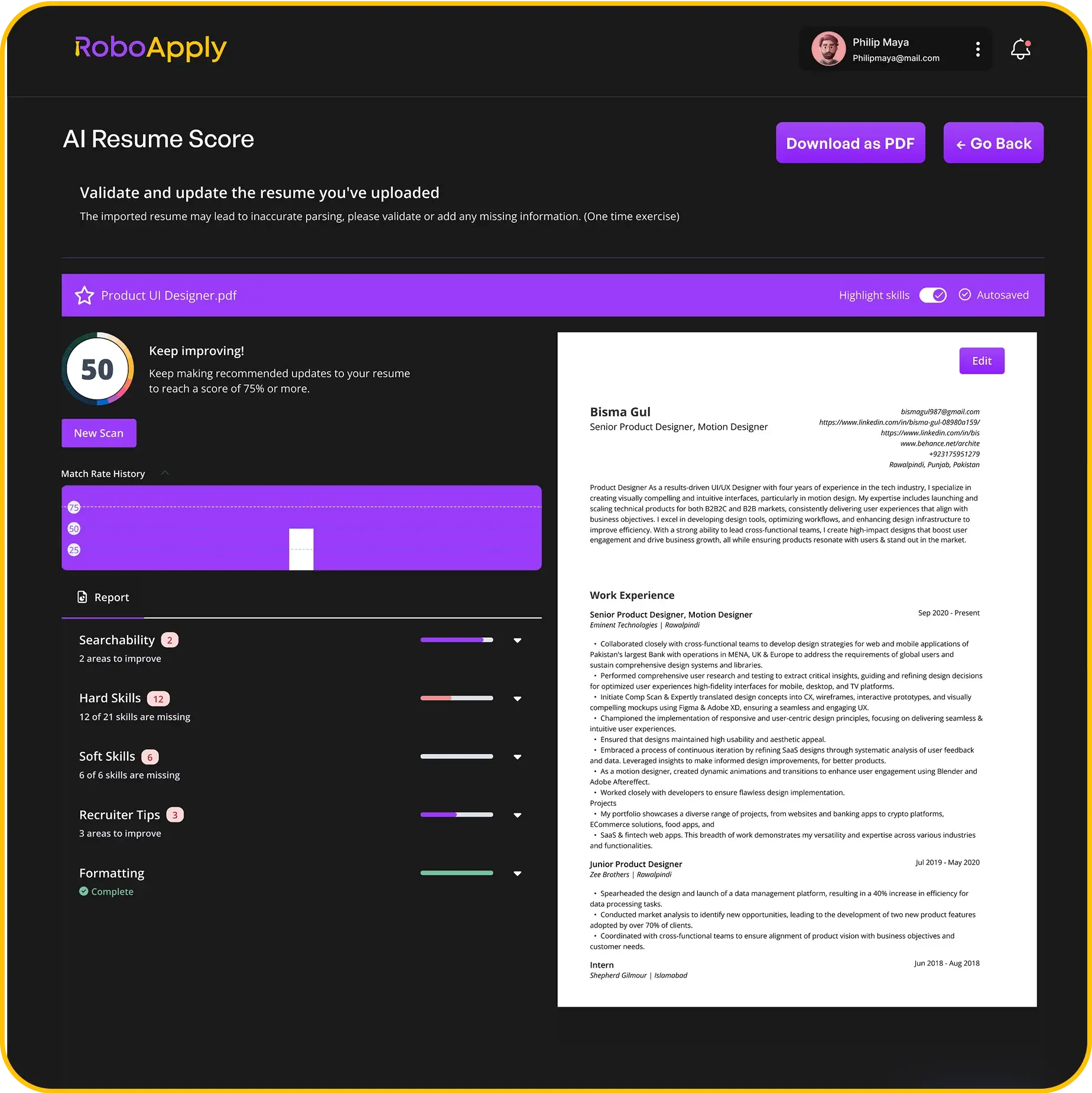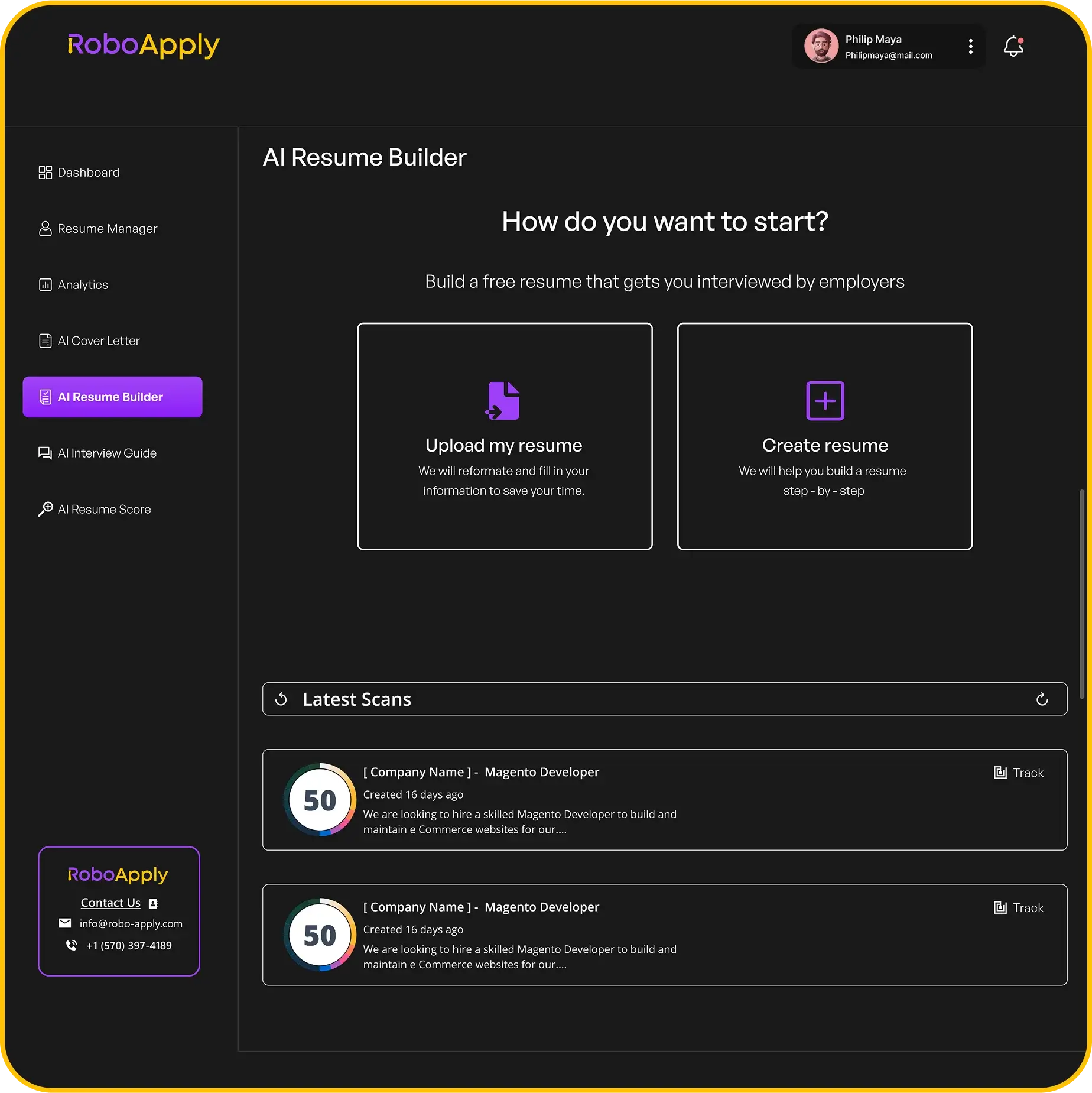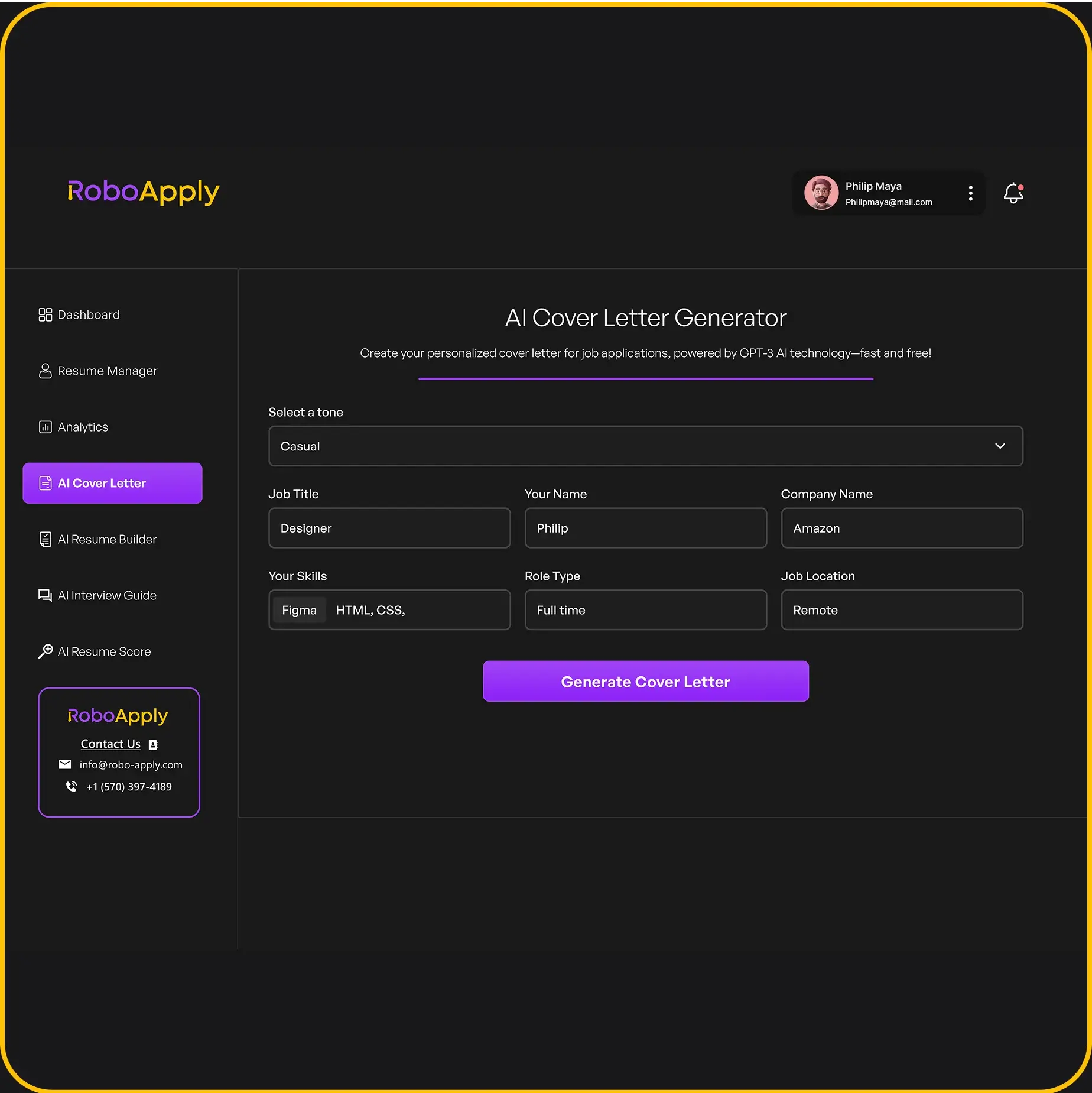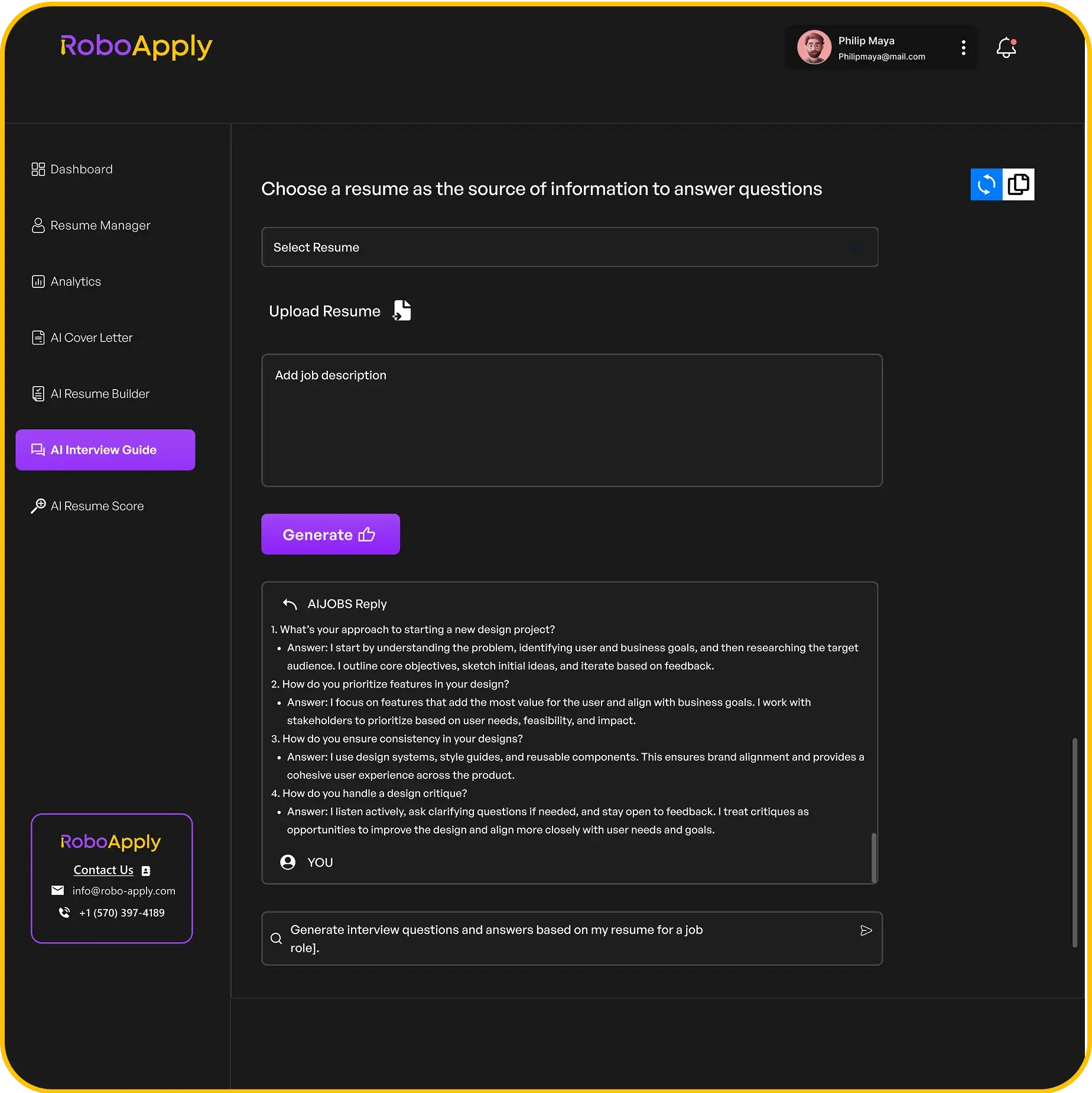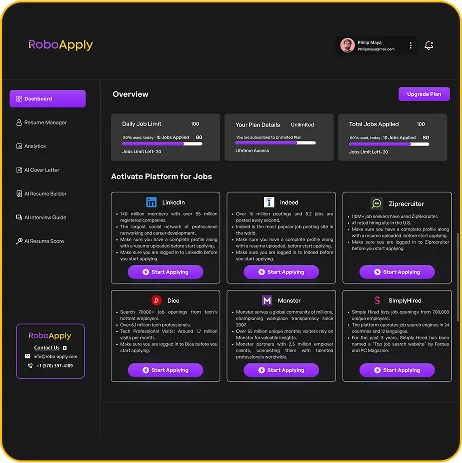So, you want to be an online tutor, huh? That’s a pretty smart move these days. But getting your foot in the door means showing off what you can do, and that usually starts with a solid resume. This guide is all about helping you put together an “Online Tutor Resume | Powered by RoboApply” that really stands out. We’ll go through each part of your resume, from your contact info to your skills, so you know exactly what to include and how to make it look good. No fancy stuff, just practical tips to help you land that tutoring gig.
Key Takeaways
- Make sure your contact information is easy to find and correct. You don’t want potential employers struggling to reach you.
- Your resume summary is super important. It’s like your elevator pitch, so make it clear and highlight your best skills right away.
- When listing work experience, focus on what you actually did and the results you got. Use numbers if you can, like ‘helped 15 students improve their grades’.
- Don’t forget about certifications! If you have any special training in tutoring or specific subjects, definitely include it.
- Always tailor your resume for each job you apply for. It takes a little extra time, but it really makes a difference.
1. Contact Information
Your contact information is the first thing a potential employer sees, so make it clear and easy to read. It should include all the necessary details for them to reach you quickly. Think of it as your digital handshake.
- Full Name: Use a professional-sounding version of your name. Avoid nicknames.
- Phone Number: Make sure it’s a number where you can be easily reached. Double-check for typos!
- Email Address: Use a professional-sounding email address (e.g., firstname.lastname@email.com). Avoid using old or embarrassing email addresses.
- Location: Include your city and state. You don’t need to provide your full street address for privacy reasons.
- LinkedIn Profile (Optional): If you have a professional LinkedIn profile, include the link. Make sure your profile is up-to-date and reflects your skills and experience. RoboApply can help you tailor your resume to match your LinkedIn profile.
It’s a good idea to keep your contact information consistent across all your job application materials, including your resume, cover letter, and online profiles. This makes it easier for employers to find and contact you.
It’s also important to regularly check your email and voicemail so you don’t miss any important communications from potential employers. A well-formatted tutor resume template will always have this section at the top. Make sure to list your skills in the appropriate section, such as subject expertise and other relevant areas. You can organize your skills effectively to highlight your strengths.
2. Resume Summary

Your resume summary is like a quick elevator pitch. It’s a short paragraph at the top of your resume that tells the hiring manager who you are, what you do, and why they should hire you. Think of it as your chance to make a strong first impression. It should highlight your most relevant skills and experience as an online tutor.
It’s really important to tailor your summary to each job you’re applying for. Don’t just use the same generic summary for every application. Take the time to read the job description and identify the key skills and qualifications they’re looking for. Then, make sure your summary highlights those specific things. RoboApply can help you tailor your resume to each job description, making the process much faster.
Here’s what a good resume summary should include:
- Your years of experience as an online tutor.
- Your areas of expertise (e.g., math, science, English).
- Your key skills (e.g., communication, patience, technology skills).
- A brief statement of your career goals.
A strong resume summary can significantly increase your chances of getting an interview. It’s your opportunity to grab the hiring manager’s attention and show them why you’re the perfect candidate for the job. Make sure it’s well-written, concise, and tailored to the specific position you’re applying for.
Here’s an example of a resume summary for an online tutor:
Enthusiastic and dedicated online tutor with 5+ years of experience providing engaging and effective instruction to students of all ages. Proven ability to improve student performance in mathematics and science through personalized learning plans and innovative teaching methods. Seeking to leverage my skills and experience to contribute to the success of tutoring jobs in 2025 at your organization.
3. Work Experience
This section is where you really show off what you’ve done. It’s not just about listing your jobs, but about highlighting your accomplishments and how they relate to the online tutor position you want. Think about using action verbs and quantifiable results whenever possible. RoboApply can help you tailor your work experience section to match the specific requirements of each job application.
Example 1: Highlighting Specific Achievements
Instead of just saying "Tutored students in math," try something like:
- Tutored high school students in Algebra I and Geometry, resulting in a 20% average increase in test scores.
- Developed and implemented personalized lesson plans for each student, catering to their individual learning styles.
- Provided online support and guidance to students outside of scheduled tutoring sessions, improving overall engagement and understanding.
Example 2: Showcasing Online Platform Proficiency
If you’re familiar with specific online tutoring platforms, make sure to mention them:
- Utilized Zoom and Google Meet to conduct engaging and interactive online tutoring sessions.
- Proficient in using online whiteboards and collaborative document tools to facilitate learning.
- Managed student progress and communication through online learning management systems (LMS). You can find more information about IT intern resume examples online.
Example 3: Quantifying Your Impact
Numbers speak volumes. Try to quantify your impact whenever possible:
- Tutored over 50 students online in the past year.
- Received a 95% positive feedback rating from students and parents.
- Increased student engagement by 30% through the implementation of gamified learning techniques.
Remember to tailor your work experience section to each specific job application. Highlight the skills and experiences that are most relevant to the position you’re applying for. Use RoboApply to help you identify the keywords and skills that employers are looking for.
Example 4: Addressing Gaps in Experience
If you’re new to online tutoring, focus on transferable skills from other experiences:
- Volunteer tutor at local library, assisting students with homework and test preparation.
- Developed and delivered training sessions for new employees at previous job.
- Excellent communication and interpersonal skills, with a proven ability to explain complex concepts in a clear and concise manner. You can also check out secretary resume examples for more inspiration.
Example 5: Using Bullet Points Effectively
Use bullet points to break up large blocks of text and make your accomplishments easy to read. Start each bullet point with a strong action verb. For example:
- Developed
- Implemented
- Managed
- Tutored
- Assisted
Example 6: Tailoring to Specific Subjects
If you specialize in a particular subject, make sure to highlight that:
- Specialized in tutoring students in advanced mathematics, including calculus and differential equations.
- Provided expert guidance and support to students preparing for standardized tests, such as the SAT and ACT.
- Developed and delivered online workshops on specific topics, such as essay writing and public speaking. You can also learn how to highlight tutoring experience on your resume.
Example 7: Showcasing Soft Skills
Don’t forget to highlight your soft skills, such as communication, patience, and adaptability:
- Excellent communication and interpersonal skills, with a proven ability to build rapport with students of all ages.
- Patient and understanding, with a commitment to helping students succeed.
- Adaptable and flexible, with the ability to adjust teaching methods to meet the individual needs of each student.
4. Education

Your education section is where you show off your academic background. It’s pretty straightforward, but there are a few things to keep in mind, especially if you’re just starting out as an online tutor. RoboApply can help you tailor this section to match the job description, highlighting the most relevant qualifications.
Education Details
List your degrees in reverse chronological order (most recent first). Include the following:
- Name of the Institution: Where you got your degree.
- Degree Type and Major: For example, Bachelor of Arts in English.
- Graduation Date (or Expected Graduation Date): Month and Year.
- GPA (Optional): Only include if it’s above 3.5, or if the job posting specifically asks for it.
If you have multiple degrees, list them all. If you’re still in school, list your expected graduation date. If your GPA isn’t great, you can leave it out. Focus on what you do have that makes you a good tutor.
Relevant Coursework
If you’re a recent graduate or don’t have much work experience, listing relevant coursework can be a great way to show off your knowledge. Include courses that are directly related to the subjects you want to tutor. For example:
- For a math tutor: Calculus, Linear Algebra, Statistics.
- For an English tutor: Composition, Literature, Creative Writing.
- For a science tutor: Biology, Chemistry, Physics.
Certifications and Licenses Within Education
Sometimes, specific certifications or licenses are relevant to tutoring, especially in certain subjects or for certain age groups. If you have any, be sure to include them here. Examples include:
- Teaching certifications
- Subject-specific certifications (e.g., math, science)
- CPR/First Aid certification (especially for younger students)
Think of your education section as a way to build trust with potential clients. It shows that you have the knowledge and credentials to help them succeed. Make sure it’s clear, concise, and easy to read. You can use a resume template in Word to make sure it’s formatted professionally. If you’re looking for resume examples to get inspired, there are many online. Even police officer resume examples can give you ideas about how to present your information clearly and effectively.
5. Certifications
Certifications can really make your online tutor resume stand out. They show you’ve taken the time to get specialized training and are serious about your profession. It’s not just about having a degree; it’s about proving you have specific skills and knowledge. RoboApply can help you highlight these certifications effectively.
Examples of Relevant Certifications
Here are some certifications that could be beneficial for an online tutor:
- Teaching Certificates: If you’re teaching a specific subject, having a teaching certificate in that area is a huge plus. For example, a math tutor with a math teaching certificate shows they have formal training in teaching math concepts.
- TESOL/TEFL: If you’re teaching English as a second language, a TESOL (Teaching English to Speakers of Other Languages) or TEFL (Teaching English as a Foreign Language) certification is almost a must. These certifications are valuable because they demonstrate you understand the specific challenges and techniques involved in teaching English to non-native speakers.
- Subject-Specific Certifications: There are certifications available in many subjects, from coding to music. If you have a certification that directly relates to the subject you’re tutoring, be sure to include it. This shows you have a deep understanding of the material.
- Online Teaching Certifications: Some organizations offer certifications specifically for online teaching. These certifications cover topics like using online learning platforms, creating engaging online lessons, and managing an online classroom. Having one of these shows you’re prepared for the unique challenges of online tutoring.
How to List Certifications
When listing certifications on your resume, include the following information:
- Name of the Certification: Be clear and specific. For example, "Certified Math Tutor" instead of just "Math Certification."
- Issuing Organization: Who gave you the certification? Include the full name of the organization.
- Date of Completion: When did you receive the certification? This shows how up-to-date your skills are.
- Expiration Date (if applicable): Some certifications need to be renewed. If yours has an expiration date, include it. This shows you’re aware of the need to keep your skills current.
Make sure to list your certifications in a clear and easy-to-read format. You can create a separate section specifically for certifications, or you can include them in your education section. The key is to make them easy for potential clients to find. RoboApply can help you format your resume to highlight your skills and certifications effectively.
Why Certifications Matter
Certifications can significantly boost your credibility as an online tutor. They show you’ve invested time and effort in developing your skills and knowledge. In a competitive market, having certifications can be the edge you need to stand out from other candidates. They also give potential clients confidence in your abilities, making them more likely to choose you as their tutor. Don’t underestimate the power of a well-placed certification on your resume!
6. Skills
Your skills section is where you show off what you’re good at. It’s not just about listing things; it’s about showing you have the right stuff to be a great online tutor. RoboApply can help you tailor this section to match specific job descriptions, making sure your most relevant skills stand out.
Hard Skills
Hard skills are the technical abilities you need for the job. For an online tutor, this might include specific software knowledge, subject matter expertise, or even data analysis skills. These are quantifiable and often learned through education or training. Here are some examples:
- Proficiency in Zoom, Skype, Google Meet, or other video conferencing software
- Expertise in specific subjects (e.g., Algebra, Calculus, Chemistry, English Literature)
- Experience with online learning platforms like Coursera, edX, or Moodle
- Knowledge of educational software and tools (e.g., Desmos, Khan Academy)
- Data analysis skills for tracking student progress
Soft Skills
Soft skills are your interpersonal abilities. They’re harder to measure but super important for building rapport with students and creating a positive learning environment. Think of things like communication, patience, and adaptability. You can find more examples of teaching skills to include in your resume.
- Excellent communication skills (written and verbal)
- Patience and empathy
- Adaptability and flexibility
- Problem-solving skills
- Time management and organizational skills
Technical Skills
This is where you list the tech stuff you know. It’s not just about knowing how to turn on a computer; it’s about using technology to enhance the learning experience. For example, can you use interactive whiteboards? Are you familiar with screen recording software? These are the things that make you a modern, effective online tutor. Effective tutoring requires interpersonal and technical skills.
- Proficiency in using online whiteboards (e.g., Miro, Mural)
- Experience with screen recording software (e.g., Loom, OBS Studio)
- Familiarity with online assessment tools (e.g., Quizizz, Kahoot!)
- Ability to troubleshoot technical issues
- Knowledge of various operating systems (Windows, macOS, Linux)
Subject Matter Expertise
This section is all about what you know. Be specific! Don’t just say "Math"; say "Calculus I & II, Linear Algebra, Differential Equations." The more specific you are, the better. This shows potential clients that you have the in-depth knowledge they’re looking for. Make sure to tailor this section to the subjects you actually enjoy teaching – your passion will shine through! Remember to highlight your math tutor skills if you specialize in mathematics.
- Calculus I & II, Linear Algebra, Differential Equations
- AP Chemistry, Organic Chemistry, Biochemistry
- English Literature, Creative Writing, Composition
- US History, World History, European History
- Spanish, French, German (mention proficiency level)
It’s a good idea to tailor your skills section to each job you apply for. Read the job description carefully and highlight the skills that are most relevant. This shows the employer that you’re a good fit for the position.
7. Awards

Awards can really make your resume pop, especially if they’re relevant to tutoring. Think about it: they show you’re not just doing the job, you’re excelling at it. But, you gotta be smart about which ones you include. Let’s break it down.
What Awards to Include
Okay, so not every award is gonna be a winner on your resume. Focus on awards that highlight your skills as a tutor or your knowledge in the subjects you teach. If you won "Teacher of the Year" at a tutoring center, that’s gold. If you got an award for perfect attendance in high school… maybe leave that one out. Relevance is key. RoboApply can help you tailor your resume to specific job descriptions, ensuring that the most relevant awards are prominently displayed.
- Academic achievements (Dean’s List, scholarships)
- Tutoring-specific awards (e.g., "Most Improved Student" awards you helped students achieve)
- Subject-matter awards (e.g., math competition wins, writing contest awards)
How to Present Awards
Don’t just list the award name and leave it at that. Give some context! A little explanation can go a long way. For example:
- Bad: "Spelling Bee Champion"
- Good: "Spelling Bee Champion – Won first place in a regional competition involving over 100 students, demonstrating strong vocabulary and spelling skills."
See the difference? The second one tells a story and shows off your skills. When you list awards on a resume, make sure to provide background and context for each one.
Where to Put Awards
This depends on the award and how important it is. If it’s a major award directly related to tutoring, you might put it in your "Work Experience" section, especially if it was part of your job. Otherwise, a separate "Awards" section is fine. If you have a lot of academic awards, you could include them in your "Education" section.
Think of your resume as a sales pitch. You’re selling yourself, and awards are like testimonials. They prove you’re good at what you do. So, use them wisely!
Example Award Entries
Here are a few examples of how you might list awards on your online tutor resume:
- "Top Tutor Award" – Awarded by [Tutoring Company Name] for achieving the highest student satisfaction ratings in 2024.
- "National Merit Scholar" – Recognized for exceptional academic performance and standardized test scores.
- "President’s Volunteer Service Award" – Acknowledged for over 100 hours of volunteer tutoring at [Organization Name].
Remember, a well-crafted tutor resume can significantly boost your job prospects. Make sure to include any relevant awards to showcase your achievements and stand out from the competition. RoboApply can help you optimize your resume to highlight these achievements effectively.
The Impact of Awards
Awards can really set you apart from other candidates. They show you’re not just meeting expectations, you’re exceeding them. They can also be great conversation starters during interviews. Be prepared to talk about your awards and what you learned from the experiences that led to them. Awards can boost career opportunities by demonstrating your commitment to excellence and your ability to achieve results.
8. Publications
Having publications listed on your resume can really set you apart, especially in academic tutoring roles. It shows you’re not just teaching the material, but you’re also contributing to the field. Even if it’s just a blog post or an article in a small journal, it demonstrates initiative and expertise. RoboApply can help you format these entries consistently, making sure they look professional and highlight the most important details.
Including Publications
When listing publications, make sure to include all the necessary information so people can actually find them. This usually means the title, the publication venue (journal, website, etc.), the date of publication, and any co-authors. Consistency is key here, so use the same format for each entry. It’s also a good idea to briefly describe the publication’s topic or your role in it, especially if the title isn’t self-explanatory. This gives the reader a better understanding of your expertise.
Types of Publications to Include
Don’t think you need to have published a book to include this section. There are plenty of other types of publications that can be relevant:
- Academic Papers: If you’ve published in peer-reviewed journals, definitely include those.
- Conference Proceedings: Papers presented at conferences count too.
- Blog Posts: If you write about your subject matter online, list those posts.
- Articles: Articles in magazines, newspapers, or online publications are great additions.
- Books or Chapters: If you’ve written or contributed to a book, that’s a major plus.
Formatting Your Publication Entries
Here’s a basic format you can adapt:
Author(s). (Year). Title. Publication Venue, Volume(Issue), Pages.
For example:
Smith, J., & Doe, A. (2024). Effective Online Tutoring Strategies. Journal of Online Education, 25(3), 120-135.
Listing publications shows you’re actively engaged in your field and committed to sharing your knowledge. It’s a great way to demonstrate your expertise and passion for your subject matter.
Highlighting Relevant Publications
If you have a long list of publications, consider highlighting the ones that are most relevant to the tutoring position you’re applying for. You can do this by listing them first or by adding a brief note about why they’re particularly relevant. This helps the hiring manager quickly see your most important contributions. You can use these resume examples to get an idea of how to format this section.
When to Include This Section
If you have relevant publications, definitely include this section. If you don’t have any, it’s okay to leave it out. Don’t try to stretch the truth or include irrelevant items just to fill space. Focus on showcasing your other skills and experiences instead. Remember to use a resume template to ensure your resume is well-organized and easy to read.
9. Volunteer Work

Volunteer work can really show another side of you, and it’s worth including, especially if it’s relevant to tutoring or working with kids. It shows you’re not just in it for the money. RoboApply can help you tailor this section to highlight the most relevant experiences.
Volunteer experience demonstrates your commitment to helping others and can set you apart from other candidates. Highlighting these experiences can be particularly useful if you lack extensive paid work experience.
Here’s how you might format it:
- Organization Name, Role: Tutor/Mentor
- Dates of Involvement: September 2023 – Present
- Responsibilities:
- Provided one-on-one tutoring to elementary students in reading and math.
- Assisted with homework and test preparation.
- Participated in fundraising events for the organization.
Volunteer work isn’t just about filling space on your resume; it’s about showing your character and values. Think about what you learned and how it relates to the skills needed for tutoring.
Another example:
- Organization Name, Role: After-School Program Assistant
- Dates of Involvement: June 2022 – August 2022
- Responsibilities:
- Supervised children during after-school activities.
- Assisted with arts and crafts projects.
- Helped organize and run summer camp events.
Consider adding metrics if possible. For example:
- Tutored 10+ students, improving their grades by an average of one letter grade.
- Raised $500+ for the organization through fundraising efforts.
Remember to tailor your volunteer experiences to match the job description. If the tutoring position emphasizes patience and communication, highlight volunteer roles where you demonstrated those skills. A volunteer experience section on a resume details unpaid, voluntary work.
Also, if you’ve held any leadership positions in your volunteer work, be sure to mention those. It shows initiative and responsibility. This guide offers successful resume examples and strategic tips for creating an effective tutor resume. A strong volunteer resume effectively demonstrates community impact.
10. Professional Affiliations
Listing professional affiliations on your online tutor resume can show you’re serious about your field and committed to staying current. It’s like saying, "Hey, I’m not just doing this as a side gig; I’m invested!" Plus, it can give you a leg up, especially if the affiliation is well-known and respected in the education world. RoboApply can help you tailor this section to highlight the most relevant affiliations for each job application.
Here’s how you can approach this section:
- Keep it relevant: Only include affiliations that directly relate to tutoring, education, or your subject area. No need to list your bowling league membership unless it somehow ties into teaching teamwork!
- Be specific: Instead of just saying "Member," mention any roles you hold within the organization or any activities you participate in. Did you present at a conference? Volunteer on a committee? These details add weight.
- List the full name: Always use the full name of the organization, followed by the abbreviation in parentheses (if applicable). This avoids any confusion.
For example:
- Association for Supervision and Curriculum Development (ASCD)
- College Reading and Learning Association (CRLA)
- Association for the Coaching & Tutoring Profession (ACTP)
Professional affiliations show employers that you’re dedicated to your field and actively seek opportunities for professional growth. It’s a simple way to boost your credibility.
Let’s look at some examples of how you might list these on your resume.
Example 1: Association for Supervision and Curriculum Development (ASCD)
ASCD is a big deal in education. It’s all about improving teaching, learning, and leadership. If you’re a member, it shows you’re committed to staying on top of the latest educational trends. You can find ASCD resources to help you grow as an educator.
Example Resume Entry:
Association for Supervision and Curriculum Development (ASCD) Member, 2020-Present
- Participated in monthly webinars on differentiated instruction.
- Volunteered as a mentor in the ASCD Emerging Leaders program.
Example 2: College Reading and Learning Association (CRLA)
CRLA is all about helping students succeed in college. If you’re a tutor, especially one who works with college students, being affiliated with CRLA can be a real plus. CRLA is affiliated with the Association of Colleges for Tutoring and Learning Assistance (ACTLA).
Example Resume Entry:
College Reading and Learning Association (CRLA) Certified Tutor Trainer, 2022-Present
- Conduct training workshops for new tutors on effective tutoring strategies.
- Presented research on student learning outcomes at the annual CRLA conference.
Example 3: Association for the Coaching & Tutoring Profession (ACTP)
ACTP is focused on building a strong community for coaches, tutors, and other education pros. It’s a great way to network and learn from others in the field. The Association for the Coaching & Tutoring Profession (ACTP) connects academic coaches, tutors, and other education professionals.
Example Resume Entry:
Association for the Coaching & Tutoring Profession (ACTP) Member, 2021-Present
- Attended ACTP regional conferences focused on academic coaching techniques.
- Participated in online forums discussing best practices in tutoring.
By including relevant professional affiliations, you’re showing potential employers that you’re not just qualified, but also actively engaged in the tutoring and education community. It’s a simple way to make your resume stand out.
11. References
It used to be common to list references right on your resume. These days, it’s more typical to say "References available upon request." Why? Because it saves space and protects your references’ contact information. Plus, employers usually only ask for references if they’re seriously considering you. RoboApply can help you tailor your resume to different job applications, making sure you include the right information at the right time.
However, there are situations where providing references upfront can be beneficial, especially if you know the hiring manager or if the job posting specifically asks for them. In those cases, a separate reference sheet is the way to go.
Here’s what a reference sheet typically includes:
- Your Name: Make sure it matches your resume.
- Your Contact Information: Phone number and email address.
- Reference’s Full Name: First and last name.
- Reference’s Job Title: Their current position.
- Reference’s Company: Where they work.
- Reference’s Contact Information: Phone number and email address.
- Your Relationship to the Reference: How do they know you (e.g., former supervisor, professor, colleague)?
- Brief Description of Your Work Together: A sentence or two highlighting your accomplishments while working with them.
It’s always a good idea to ask your references for permission before including their information. This gives them a heads-up and allows them to prepare a positive recommendation for you. Plus, it’s just good professional courtesy.
Here’s an example of how you might format a reference entry:
Your Name: Jane Doe
Your Contact Information: (555) 123-4567 | jane.doe@email.com
Reference 1:
- Full Name: John Smith
- Job Title: Senior Project Manager
- Company: ABC Company
- Contact Information: (555) 987-6543 | john.smith@email.com
- Relationship: Former Supervisor
- Description: John supervised Jane on several key projects, where she consistently exceeded expectations in project delivery and team collaboration.
Reference 2:
- Full Name: Emily Brown
- Job Title: Professor
- Company: XYZ University
- Contact Information: (555) 246-8021 | emily.brown@email.com
- Relationship: Professor
- Description: Emily taught Jane in advanced marketing courses, where Jane demonstrated exceptional analytical skills and a strong understanding of marketing principles.
Reference 3:
- Full Name: David Lee
- Job Title: Team Lead
- Company: 123 Industries
- Contact Information: (555) 135-7913 | david.lee@email.com
- Relationship: Colleague
- Description: David worked alongside Jane on various projects, where she consistently displayed strong leadership skills and a collaborative spirit.
Remember to tailor your reference page to each job application, selecting the references who are most relevant to the position. Also, make sure your references are aware of the job you’re applying for and are prepared to speak to your qualifications. This preparation can significantly increase your chances of securing the job. You can also learn about tutor resume examples to help you create your own resume. Knowing when to list references and how to create a dedicated reference page can make a big difference.
12. Portfolio
Your portfolio is where you show off your best work. It’s not just a list of what you’ve done, but evidence of your skills and teaching style. For an online tutor, this might include lesson plans, student testimonials, or even video clips of you teaching. RoboApply can help you organize and present this information in a professional way.
What to Include in Your Online Tutor Portfolio
Think of your portfolio as a dynamic resume. It should evolve as you gain more experience and develop new skills. Here are some ideas:
- Lesson Plans: Showcase your ability to create engaging and effective learning experiences. Include a variety of subjects and grade levels to demonstrate your versatility. Make sure to highlight any innovative teaching methods you’ve used.
- Student Testimonials: Positive feedback from students and parents can be incredibly powerful. Ask for permission to use quotes or short videos in your portfolio. Genuine testimonials build trust and credibility.
- Teaching Videos: Short clips of you teaching can give potential clients a sense of your personality and teaching style. Focus on moments where you’re explaining a concept clearly, engaging with students, or providing helpful feedback. Keep them concise and well-edited.
- Sample Assignments and Assessments: Include examples of assignments you’ve created, along with rubrics or grading criteria. This demonstrates your ability to assess student learning and provide meaningful feedback. Show a range of difficulty levels.
- Certifications and Training: Highlight any relevant certifications or training programs you’ve completed. This shows your commitment to professional development and staying up-to-date with the latest teaching methods. Don’t forget to include dates and issuing organizations.
Building Your Portfolio Website
There are many platforms you can use to create your online portfolio. Some popular options include:
- Personal Website: A personal website gives you complete control over the design and content of your portfolio. You can use platforms like WordPress, Wix, or Squarespace to create a professional-looking site without needing extensive coding knowledge. This allows for maximum customization.
- LinkedIn: LinkedIn is a great platform for showcasing your professional experience and skills. You can add samples of your work to your profile and ask for recommendations from students and colleagues. It’s also a great way to network professionally.
- Google Sites: Google Sites is a free and easy-to-use platform for creating simple websites. It’s a good option if you’re looking for a quick and straightforward way to create an online portfolio. It integrates seamlessly with other Google services.
A well-organized portfolio can significantly increase your chances of landing online tutoring jobs. It provides concrete evidence of your skills and experience, helping you stand out from the competition.
Tips for a Standout Portfolio
- Keep it Updated: Regularly add new work samples and testimonials to keep your portfolio fresh and relevant. An outdated portfolio can give the impression that you’re not actively tutoring.
- Tailor it to the Job: Customize your portfolio to highlight the skills and experience that are most relevant to each job you apply for. This shows that you’ve taken the time to understand the specific requirements of the position.
- Get Feedback: Ask friends, colleagues, or mentors to review your portfolio and provide feedback. A fresh pair of eyes can help you identify areas for improvement.
- Proofread Carefully: Ensure that your portfolio is free of typos and grammatical errors. A polished and professional presentation is essential for making a good impression. Use a tool like Grammarly to help.
- Showcase Results: Whenever possible, quantify your achievements. For example, instead of saying "Improved student grades," say "Helped 80% of my students improve their grades by at least one letter grade."
Creating a strong portfolio is a key step in building a work portfolio that will help you land your dream online tutoring job. Take the time to showcase your skills and experience in a way that is both informative and engaging. RoboApply can help you track your portfolio’s performance and identify areas for improvement.
13. Cover Letter
Okay, so you’ve got your resume polished and ready to go. But don’t forget the cover letter! Some people think they’re outdated, but a good cover letter can really help you stand out. It’s your chance to show some personality and explain why you’re perfect for the job. Plus, it lets you address anything specific about the position that your resume doesn’t cover.
A cover letter is your chance to make a personal connection with the hiring manager. It’s more than just repeating your resume; it’s about showing your enthusiasm and explaining why you’re a great fit for their team.
Think of it as your introduction – make it count! You can use RoboApply to help you create a great cover letter.
Here’s what you need to know about crafting a killer cover letter for your online tutor application. Remember, a well-crafted cover letter can significantly boost your chances of landing an interview. It’s worth the effort to get it right. You can find formal templates online to help you get started.
Here are some key things to keep in mind:
- Tailor it: Don’t just send the same generic letter to every job. Customize it for each position, highlighting the skills and experiences that are most relevant.
- Show, don’t tell: Instead of just saying you’re a great communicator, give an example of a time you successfully explained a difficult concept to a student.
- Keep it concise: Hiring managers are busy. Get to the point quickly and keep your letter to one page.
And remember, tools like RoboApply can help you tailor your cover letter to each specific job application, saving you time and effort. It’s all about making the best impression possible. You can use these cover letter examples to help you get started. In 2025, cover letters are still valuable in the job search.
A strong cover letter can really make you stand out. It’s your chance to tell your story and show why you’re the best fit for the job. Don’t miss this important step! Want to make writing cover letters super easy? Check out how our AI tool can help you create amazing ones in no time. Visit our website to learn more!
Wrapping Things Up
So, there you have it. Getting your online tutor resume just right might seem like a big job, but it’s really about showing what you can do. Think about the things we talked about: making your skills clear, showing off your teaching style, and making sure it all looks good. A good resume helps you get noticed by the right people. Keep it simple, keep it honest, and you’ll be on your way to finding some great tutoring work. Good luck out there!
Frequently Asked Questions
What’s the best way to make my online tutor resume stand out?
Make your resume easy to read and focused on what you can do. Highlight your teaching skills and any good results you’ve helped students get. Use strong action words to describe your experience.
Should I include a cover letter with my online tutor resume?
Yes, it’s a really good idea! A cover letter lets you tell a bit more about yourself and why you’re a great fit for the tutoring job. It’s your chance to show your excitement and personality.
What kind of skills should I put on my resume as an online tutor?
You should list skills like knowing your subject well, being able to explain things clearly, being patient, and knowing how to use online tools for teaching. Also, mention if you’re good at helping students with different learning styles.
How long should an online tutor resume be?
It’s usually best to keep your resume to one page, especially if you’re just starting out or have less than 10 years of experience. If you have a lot of experience and important achievements, two pages can be okay.
What if I don’t have much experience tutoring online?
If you don’t have direct tutoring experience, focus on other experiences where you taught, mentored, or helped others learn. This could be from volunteer work, school projects, or even helping family members with homework.
What is a resume summary and do I need one?
A resume summary is a short paragraph at the top of your resume that quickly tells the reader who you are, what you’re good at, and what you want to do. It’s like a quick introduction to grab their attention.
Should I include awards on my resume?
You can mention any awards you’ve won for academic success, teaching, or leadership. Even if they’re not directly related to tutoring, they show you’re dedicated and good at what you do.
How should I handle references on my resume?
You can usually put your references down as ‘Available upon request.’ This means you’ll give them the contact info for your references if they ask for it later in the hiring process.





